A community centre kitchen without water is like a car without fuel. That said, you don’t want fuel leaking all over the car’s interior – much like you don’t want water where it isn’t supposed to be in your kitchen.
You will already know how important it is to keep workspaces hygienic and safe in a community centre – free of food waste, clear of dust and all spills mopped up.
As with your home kitchen, a certain amount of cleaning is required. However, you might be surprised by the number of ways that kitchen design can prevent (or reduce) these problems from cropping up in the first place.
Here are some ways you can adapt your semi-commercial kitchen to stay on top of water hygiene, while also making it easier and less time consuming to maintain a clean, safe kitchen environment.
1. Choose the right worktop material
While MDF makes a great choice for domestic-style kitchens, it’s going to fall short for a semi-commercial kitchen – especially when it comes to ensuring hygienic, clean, and dry surfaces.
Why?
As well as a host of other issues, MDF absorbs water, oils and other spills, which will gradually weaken the structural integrity of your kitchen unit and worktop. This will make it more likely to warp or come apart, risks hinges coming off and delaminating,[SB1] becoming a breeding ground for bacteria.
While you might think a vinyl protective wrap will solve the issue, it’s unfortunately not quite so simple. If water manages to seep under the wrap, it will start to lift and bubble, spoiling the appearance of your worktops, and allowing bacteria to grow beneath the coating.
So, what is the answer?
Opt for a worktop and cabinet material that doesn’t absorb water or other liquids. Polyester powder-coated mild steel is non-absorbent, easy to clean, hard-wearing, crack-resistant and can easily be dried off with an absorbent towel to prevent moisture building up.
The result is clean, dry, hygienic work surfaces that will last countless uses without showing significant signs of wear and tear.
2. Design out areas where water can accumulate and stagnate
When water accumulates in those hard-to-reach areas of your community centre kitchen, it can become a breeding ground for mould, bacteria and a catalyst for limescale – none of which you want in an area where you will be preparing food and drinks for large groups of people.
Sinks, tiles behind the sink, and grouting are all areas that often fall victim to mould accumulation. This is not only unsightly, but also a hygiene risk.
So, what can you do to prevent it?
First things first, you can choose a worktop where the sink is welded into it. This stops a ‘lip’ being created, and removes an area where bacteria can easily start to gather.
The second thing you can do is install a UPVC splashback sitting on a folded rear upstand integral to the worktop. This will prevent water from splashing around, getting into tiles and grouting, and again, not allowing mould to grow.
3. Design your kitchen to avoid cross contamination
Cross-contamination – where food leaving the kitchen and waste returning through the servery – isn’t a problem you have to manage in your domestic kitchen, but you will in a community centre kitchen.
But did you know that you can ‘design out’ places where cross contamination may occur?
Professional kitchens will often be designed in a food triangle to ensure that food going out to customers doesn’t pass food waste coming back in or food going to disposal, and the same principle applies to your water.
That’s where a second sink is essential.
Having a separate vegetable preparation sink to your ‘dirties’ sink ensures you avoid cross-contamination. When you remove food waste from plates, you can rinse them in your ‘dirties’ sink before transferring them to your dishwasher, where they are sterilised by washing at high heat. This is the most hygienic (and timesaving) process for dealing with the washing-up.
By consulting an expert in semi-commercial kitchen design, like Steelplan, to design and implement a kitchen triangle that minimises chances of cross contamination, improves hygiene, and ensures effective water management.
4. Avoid slipping hazards
Effective water management in a community centre kitchen isn’t just about improving hygiene. It’s also a safety issue.
Spilt water on the floor can cause a serious safety hazard for anyone in your kitchens, making the ground slippery and increasing likelihood of accidents. While you can choose a non-slip surface for your flooring like resin, there is only so much you can design out hazards like these.
So, what is the solution?
Aside from anti-skid surface coatings, you should look to instil rigorous safe practice guidelines for your kitchen users – especially if there are children around.
5. Make your kitchen safe and hygienic by design
Staying on top of hygiene will always be a priority in a kitchen, whether it’s commercial, semi-commercial or domestic.
However, investing in a kitchen that is hygienic and safe by design can help take a lot of time and stress out of managing your kitchen, and instead allow you to focus on what it’s really there for – whipping up delicious meals that bring your community together.
If you are looking to transform your church or community centre kitchen to make it safe, hygienic and above all, fun, get in touch to see how Steelplan can transform it with our free design and consultation service.
Need more tips about community centre kitchen safety and hygiene? Check out our dedicated blog.





